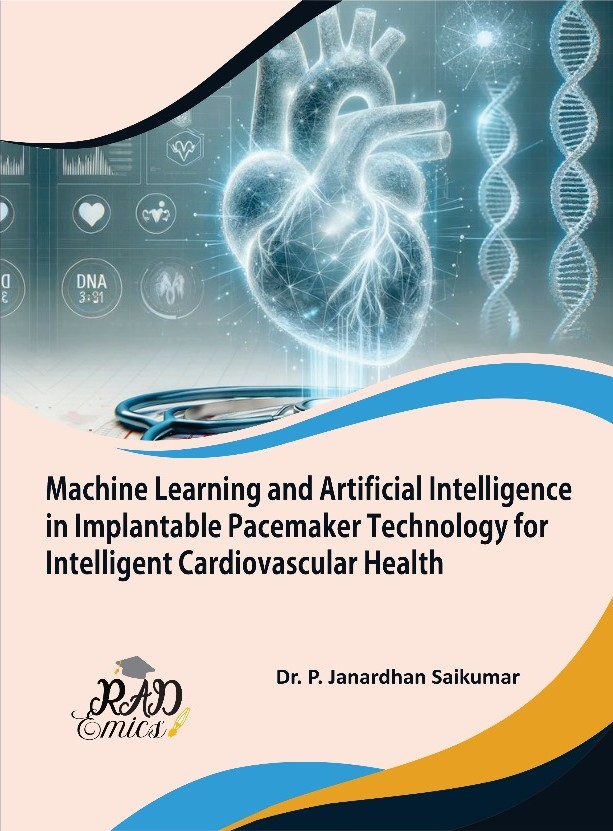
Abstract
Implantable pacemaker systems play a vital role in managing cardiac arrhythmias, yet their long-term reliability depends on maintenance strategies that can detect faults and hardware degradation before they pose risks to patient safety. Conventional maintenance relies on scheduled check-ups and threshold-based telemetry monitoring, which often lack the predictive power to anticipate failures proactively. This chapter explores how data driven modelling and digital twin frameworks can transform pacemaker maintenance from a reactive to a predictive paradigm. By leveraging continuous streams of physiological signals and device telemetry, advanced machine learning models can identify early signs of battery depletion, lead fracture, or circuit anomalies. The concept of a digital twin—a real-time, virtual replica of the implantable device—extends this capability by simulating the pacemaker’s behavior under various scenarios, enabling clinicians to forecast potential issues and plan timely interventions. Key considerations include designing lightweight, energy-efficient AI models, securing wireless telemetry through robust IoT infrastructures, and ensuring compliance with medical privacy standards. Challenges such as limited on-device processing power, explainable AI requirements, and clinical validation pathways are also discussed. This chapter lays a foundation for future research and practical development of predictive maintenance strategies for next-generation cardiac implantable devices.
Introduction
Implantable pacemakers have become an indispensable solution for millions of patients suffering from cardiac rhythm disorders [1]. Decades of technological progress have made these devices smaller [2], smarter, and more capable of providing adaptive therapy that responds to real-time physiological changes [3]. Alongside hardware improvements, modern pacemakers now feature wireless telemetry and programmable parameters, allowing clinicians to adjust settings and monitor device performance with greater precision than ever before [4]. These advances have significantly improved patient outcomes and extended device longevity [5].
These gains, ensuring the continuous and fault-free operation of pacemaker systems remains a critical challenge [6]. Battery depletion, lead fractures, insulation failures, or unexpected circuitry faults can compromise device performance, sometimes with severe or even fatal consequences [7]. Traditional maintenance practices depend heavily on periodic check-ups and threshold-based monitoring, where data are reviewed retrospectively during routine visits or remote interrogations [8]. While valuable, these approaches may fail to detect subtle [9] signs of degradation that develop silently between scheduled assessments [10].
Recent developments in data driven modelling have opened the door to more proactive strategies for monitoring pacemaker health [11]. By analyzing continuous streams of telemetry data and physiological signals, advanced algorithms can identify hidden trends and predict failures before they occur [12]. Machine learning models, anomaly detection frameworks, and time-series forecasting tools can reveal degradation patterns that conventional diagnostics often overlook [13]. Such predictive insights hold the promise of extending device life, preventing emergency interventions [14], and improving patient safety [15].